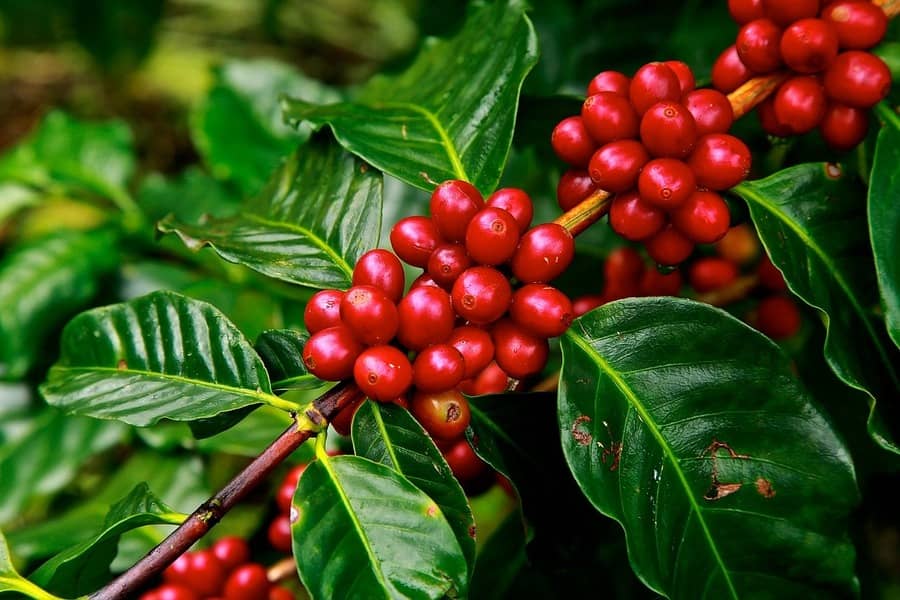The USDA biannual report cut the world coffee production to 172.75 mln 60-kg bags in the 22/23 season. Down 1.3% compared to the June projection. The reduction is concentrated in arabica production, which was revised downward by 2.5%. The lower-than-expected arabica crop in Brazil, in particular, and lower production in Colombia justify the global cut. The Colombian crop was harmed by excessive rain due to the effects of La Nina. Brazilian production was negatively affected by drought, temperatures well above average, and frost in July last year.
Production in Vietnam was hampered by excessive moisture and lower use of fertilizers, given the soaring price of inputs. But the decline in robusta production in Vietnam is more than offset by growth in India, which has been expanding its robusta area. And, with that, world robusta production is revised upward by 0.2%, mitigating the effect of the drop in arabica.
Despite the negative adjustments, world production is expected to grow by 4% compared to 21/22. Driven mainly by arabica, which must increase by 4%. Robusta production grows less, rising 1.7% in the current season. Brazil stands out as the main origin, accounting for 36% of world production, followed by Vietnam, with 17%, and Colombia, which accounts for 7% of the total.
The growth dynamics of robusta coffee draw a lot of attention. In the current season, robusta production accounts for 46% of the total, against 54% of arabica. As a basis for comparison, in the 2016/17 season, arabica accounted for 63%, while robusta coffee accounted for only 37%. During this period, arabica production shrank by 8%, while robusta production grew by 34%. In addition to traditional robusta origins, such as Vietnam, which consolidates around 30 mln bags, and Indonesia, with 10 mln bags, Brazil and India also stand out.
The Brazilian harvest of conillon (robusta species) jumped from 17 to 23 mln bags, an increase of 6 mln bags or 35% in just 6 years. At this rate, Brazil may in the future threaten Vietnam’s leadership as the main origin of this coffee. It is also likely that the size of arabica and robusta production will tend to equalize over the next few years. The highly valued price of arabica made world industries change the composition of the blend, with the increasing incorporation of robusta coffee. And a return to the old blends is not a natural guarantee. Arabica will need to make an effort to regain lost ground.
USDA reduces global surplus to 4.81 mln bags of coffee in 22/23
Despite negative adjustments, world coffee production must grow in the 22/23 season. Against the production flow, USDA indicates a scenario of slowdown in demand. World coffee consumption is expected to grow by just 0.5%, negatively impacted by the economic slowdown and loss of purchasing power, with rising inflation and high interest rates, especially in Europe and the United States. Amid the shadow of recession, external flow must also lose strength, with a drop in global exports, projected by USDA at 139.26 mln bags. Brazil must account for 26% of the total shipped in the world, followed by Vietnam, with 20%. There is a clear tendency for the world industry to stretch positions and work from hand to mouth, leaving it up to growers to carry stocks.
In this scenario of shorter demand, USDA projects a global surplus of 4.8 mln bags in the 22/23 season. It is lower than the projected in June, of 7.91 mln bags. Even so, it signals a change from the deficit of 1.01 mln bags in 21/22. And with the biggest gap in supply, stocks must rise 4.8%, totaling 34.11 mln bags at the end of the 22/23 season.
The volume stored is concentrated especially among importers, with emphasis on the European Union (13 mln bags), USA (6.10), and Japan (3.00). Among growers, Brazil, with 4.12 mln bags, and Vietnam, with 3.06 mln bags, continue to stand out. In this composition, the stock-consumption ratio at the end of the 22/23 business season is around 20%. The fact is that, even with the improvement, the scenario is still tight. And, therefore, the need for a full crop in Brazil in 2023, with a view to confirming the resumption of stocks and, therefore, bringing more tranquility about supply.
(tabela: oferta e demanda mundial de café)
Here is a brief comment on recent trends in world coffee consumption. The biggest consumers continue to be the European Union and the USA, but they show a dynamic of very slow growth. Crisis and pandemic, perhaps, explain this performance. The fact is that, in comparison with the 2018/19 season, consumption in both the European Union and the USA fell in absolute terms. And a similar interpretation can be made for Brazil, the world’s second-largest consumer. On the other hand, there is growth in coffee consumption in the Philippines, Canada, and China. They are still small destinations, but perhaps they point to the future, especially in the case of Asia.
In any case, the coffee market has been characterized much more by the increase in revenue, which is positive, than by the increase in the volume consumed. But is that sustainable in the long run? And what would be the effect of a fall in the price level? Thus, while not developing new markets, it is good to avoid a lack of control in production to ensure a level of income for growers.

